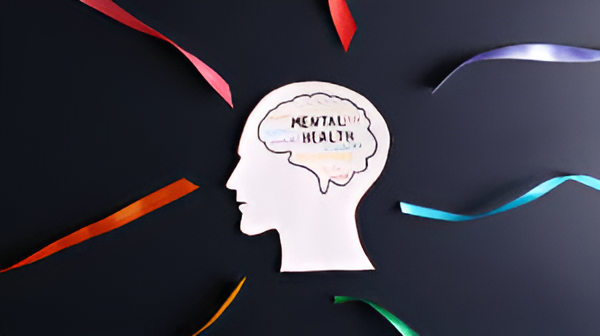Uncategorized
Make a Memory Box Time Capsule

We all have special moments we never want to forget, your first friendship, a family trip, your favorite toy, or a letter to your future self. A memory box, or a time capsule, is just the means to preserve those moments and safeguard them for the future. Creating a time capsule is a fun, creative, and emotional activity by yourself or with family or friends. Here is a step-by-step procedure on how you can make a memory box or time capsule that you will have fun opening in years to come.
1. Choose a Strong, Waterproof Box
Choose a box that will protect your contents from long-term deterioration. A metal or plastic one with a tight cover is best. Or put it in a wooden box inside. See that it is big enough to contain everything you have but small enough not to be cumbersome to store or bury.
2. Choose Where You’ll Store It
Will you hide it in the attic, under your bed, or bury it in the back yard? If it goes into the ground, make sure the box is completely waterproof. Mark the box with a “Do Not Open Until…” date so that you (or someone else) will remember when to open it someday.
3. Pick a Theme or Purpose
Think about what this time capsule is representing. Is it your childhood? A favorite year? Family gathering? Having a theme will make it easier to determine what to place inside it and will make sense to your future self or others why it was created.
4. Include Personal and Special Items
Fill your memory box with meaningful items. You may place:
Pictures or printed selfies
A letter to your future self
Artwork or photographs you’ve made
Your list of favorites (food, music, TV shows)
Newspaper articles or school reports
One little toy or one thing that is just your favorite
Friendship band or keepsake
Make each one represent who you are now so that your future self can look back and see how much you’ve grown.
5. Write a Time Capsule Letter
This is likely the most fun and valuable section. Write a letter to yourself for the future. Tell your future self who your closest friends are, what makes you happy, what you worry about, and how you wish your life would go. Don’t forget to sign and date it!
6. Label and Protect Everything Inside
Store things in a dry and safe manner using zip-lock bags, plastic covers, or folders. You might even put sticky notes or tags on each item to describe it. That way, if you have to open it afterwards, you’ll know what everything is—even the strange doodles.
7. Seal It and Mark the Date
Close the container once you have filled your memory box and written your letter. Don’t forget to write the opening date clearly on top. It could be 1 year, 5 years, or 10! Choose a day when it will feel that little bit special when you open it.
8. Store it in a Safe Place or Dig a Hole and Bury It
If you’re leaving it inside, place it in a safe and hidden location. If you’re burying it, plant it deep enough that it won’t be subjected to weather or wildlife. You might even create a map so you can find it again—or leave the location a mystery for extra drama!
Creating a time capsule or memory box is like sending yourself a present to the future. It reminds you of who you were, what mattered to you, and how far you’ve come. So don’t hurry, be creative, and most importantly, have fun creating something that can be remembered for years to come.
Uncategorized
Food-Allergic Child: How to Keep Them Safe and Healthy

It is worrisome to have a food-allergic child, particularly since a small amount of food can be lethal. Your job as a parent or caregiver is not just to ensure the safety of the child but also to ensure the child feels secure and at ease in his or her surroundings. From birthday parties to birthday parties and even from day-to-day family dinners, food allergies require planning, good communication, and ongoing education. Here, you’ll get step-by-step, easy-to-use information that will help and protect your child with food allergies in any situation.
Learn the Basics of Food Allergies
In order to protect your child, you must have a thorough understanding of their allergies. Food allergy happens when the immune system of the body identifies a specific food as bad. The body reacts with mild itching to near-fatal shortness of breath. Peanuts, milk, eggs, nuts, soy, wheat, fish, and shellfish are common food allergens. Your child’s doctor can confirm the allergy through blood tests or skin tests and give you an official diagnosis.
It is also important to know how to identify the signs of an allergic reaction. Mild symptoms include rashes, hives, stomach pain, or swelling of the lips. Severe symptoms, such as trouble breathing, tightening of the throat, or dizziness, may indicate anaphylaxis—a deadly condition. Always have an allergy action plan, which instructs others what to do in case your child experiences a reaction. Be sure to give this plan to teachers, babysitters, family members, and anyone who watches your child.
Make Your Home Allergy-Free
The key to preventing your child from experiencing allergic reactions is to make your home a safe environment. Start by removing or replacing foods containing allergens. Thoroughly clean the kitchen and reduce cross-contact with allergy-safe and unsafe foods. Always read ingredient labels—even on familiar products—since food manufacturers sometimes change ingredients or processing procedures.
If people in your home are allergic to the allergen, store their food separately and mark it so. Clean hands, dishes, countertops, and utensils after cooking to prevent contaminating traces of allergens. Having your kitchen allergy-aware avoids mishaps and sets practices that your child can carry with them throughout their life.
Teach Your Child About Their Food Allergies
Food-allergic kids need to learn to guard themselves against potential harm even at a young age. Explain to them what they should not eat and why. Use plain words and inform them of the seriousness of allergic reactions but in a manner that will not traumatize them. Teach them how to say no if someone gives them a food that they do not know. Warn them to always inquire of an adult whether they can consume a new thing.
Practice everyday scenarios, such as school lunch or birthday celebrations, using role-play with your child. Show them how to read food labels, identify safe foods, and ask questions about ingredients. Medical alert jewelry, lunchbox cards, or stickers may also serve as reminders to others about your child’s food allergy. By creating your child’s confidence and awareness early, you empower them to be able to communicate and stay safe in many situations.
Speak Clearly to Schools and Caregivers
Your child’s teachers, school staff, and day care workers can also help look after your child when you are not around. Ensure they know thoroughly about your child’s food allergy and how to respond in case of an emergency. Provide a copy of the allergy action plan and instruct your child on how to use an epinephrine auto-injector (e.g., EpiPen). Have a labelled emergency kit in your child’s back pack, in their classroom, or in their day care bag.
Discuss with the school food handling during lunch, snack time, and special events. Discover policies regarding sharing food and whether allergen-free zones are made available. Pack foods and snacks brought in from home so you can be assured they are safe. Stay in communication with school employees regularly to watch over your child’s safety and changes in school food policies. Your communication creates everyone’s feeling of being prepared and accountable.
Plan Eating Out with Confidence
Eating at restaurants with a food-allergic child does require a little extra planning, but it can be a safe and enjoyable experience. Select restaurants that are aware and accommodating of food allergies, avoiding the risk of cross-contamination. Call ahead and speak with the chef or manager about your child’s diet. Request details of ingredients, cooking, and kitchen utensil sanitation.
Avoid buffets or fast food restaurants where the exposure to allergens is higher. Take your child’s food with you if you’re not sure of the options. Bring your child’s emergency kit, containing his or her epinephrine injector, with you wherever you go. Keep a list of restaurants that you’ve gone to before and feel comfortable with so that you can know where it’s safe to return. With some planning, your family can enjoy safe meals out together without undue concern.
Make Celebrations Safe and Fun
Special occasions, such as holidays, birthdays, and class parties, are riddled with food hazards. Beforehand, kindly call the host or teacher in advance to inquire about the food that will be eaten and whether you can bring safe alternatives. Kindly bring your child along with a special item he or she might have so that they will not feel left out. You can also volunteer to help at parties and participate in food preparation.
Mark your child’s food with care and inform them that they can only eat anything if you or another responsible adult allow them to. Inform other parents about allergies and provide simple advice on how to make events inclusive and accessible. Pre-planning allows your child to have fun while staying healthy and safe.
Be Prepared for Emergencies at All Times
Even when things are planned in advance, accidents may happen; one must always be ready. Take at least two epinephrine auto-injectors wherever your child goes. Teach older children, family members, teachers, and caregivers how to use the injector should there be an emergency. Keep your phone charged and make sure your emergency contacts are up to date at all times.
Ensure your child is familiar with the signs of a reaction and what to do in case they experience any distress. Teach them to stay calm, get assistance when needed, and take their medication as directed. Early action can be life-saving, so discuss your plan regularly and remain vigilant even in safe environments.
Support Your Child Emotionally and Mentally
Food-allergic children may occasionally feel different, anxious, or isolated from their peers. It’s important to take care of their psychological well-being as much as their physical well-being. Have an open discussion with the child and make them express their feelings. Let them know they’re not weak or odd because they have a food allergy.
Lead your child to grow in confidence by emphasizing what they can have and eat. Seek out allergy-safe recipes and enjoy preparing meals together as a family in the home. Develop friendships with considerate and respectful peers. Attend a support group in your area for children with allergies so that your child can connect with others who face the same difficulties. Emotional support promotes resilience and enables your child to deal with life in a positive way.
It may feel daunting to manage food allergies initially, but by gaining the necessary knowledge, tools, and habits, you can protect your child and keep them happy. From the home front to school days and family vacations, every step you take makes the world a safer place for your child. Support them with love, teach them with love, and prepare to defend them. With your help, your child can have a full, empowered, and joyful life—one safe bite at a time.
Home & Decor
Green Dreams: Plants That Thrives In Your Bedroom

By adding some plants to your bedroom, you can enhance your mood, add some color, and purify the air. To bring in some natural light, we chose to put a houseplant in our bedroom. In addition to adding a beautiful pop of color, it has lifted my spirits. Additionally, to improve your mood, clean the air, and add some color, add a plant to your bedroom. We decided to place a houseplant in our bedroom to add some natural light. In addition to adding a lovely pop of color, it has lifted my spirits. Additionally, I’ve learned that some plants can enhance the quality of the air in your bedroom. Let’s now discuss some of the best plants for bedrooms.Here is a list of the best plants for your bedroom.
Aloe Vera:
Aloe vera is ideal for your sleeping environment because it produces oxygen at night. Being able to withstand neglect—you can go up to three weeks without watering it and it will still be healthy—makes it one of the easiest plants to maintain. These succulent plants are well known for their medicinal properties; the leaf juice can be applied externally to burns and scrapes. Aloe vera, well-known for its therapeutic qualities, also cleans the air.
Maintenance Tip: This plant grows best in bright, diffused sunlight. After the dirt has dried out, water it.
Areca Palm:
The areca Palm is the perfect plant to help clear your sinuses in your bedroom. If you often get colds or sinus problems, the areca palm, also known as the butterfly palm, is the perfect plant for your bedroom. These palms release moisture into the air, which may help with breathing while you sleep.
Maintenance Tip: Avoid direct sunlight and use water sparingly during hot weather. Place the palms in a bright, well-lit spot and make sure the soil is moist. Use a broad, all-purpose feed once a month.
Stay calm, Lily:
Since peace lilies are known to eliminate formaldehyde, benzene, acetone, alcohols, and trichloroethylene from the air, they produce lovely white blossoms that look fantastic indoors. Because they are dangerous, you should keep these plants out of the reach of kids and pets. Plant the peace lily in a part of your house that receives moderate to strong indirect sunlight, and keep the soil moist for best results. The peace lily’s capacity to absorb acetone fumes may help purify the air in buildings.
Maintenance Tip: Consistently moist soil with minimal sunlight is ideal for peace lilies.
Pothos in gold:
This plant is perfect for indoor hanging baskets. With its heart-shaped marbled leaves, this will look stunning in your bedroom. This plant is another excellent choice for a hanging basket. This feature is very useful if you have small children or pets that are prone to tipping over plant pots! Additionally, the golden pothos will remove formaldehyde and other dangerous air pollutants.
Maintenance Tips: This plant is easy to maintain. Houseplants only require moderate light or a little sunshine, and they should be watered and fed once a week.
How to Maintain the Health of Your Bedroom Plants
Lighting: Indirect sunlight or low light levels are ideal for many bedroom plants. Select plants that complement the lighting in your space.
Watering: Just water your houseplants until the top inch of soil feels dry, as overwatering can kill most of them.
Humidity: Certain plants, like ferns, prefer higher humidity levels. A humidifier can help maintain the proper conditions in the bedroom.
I also discovered that certain plants can improve the air quality in your bedroom. Now, let’s talk about some of the top bedroom plants.
Uncategorized
Mental Health Matters: Daily Habits to Enhance Your Well-Being

Mental well-being is an important aspect of our overall well-being. Just as we maintain our body, maintaining our mental well-being is equally important. A few simple yet regular daily habits can go a long way to mental clarity, reduce stress, and enhance emotional stability. With habit awareness that improves mental well-being, we can build a positive mindset, improve resilience, and live a healthier life. Here are some simple habits that can help you improve your mental health day by day.
Start Your Day with Gratitude:
Starting the day with gratitude sets a positive atmosphere for the entire day. Take a few minutes to reflect on what you are grateful for. It can be your family, your health, or even small things you enjoy. Practicing gratitude daily can shift your mind towards a positive direction.
Exercise Regularly:
Physical activity isn’t just good for your body; it’s essential for your mind. Exercise releases endorphins, which reduce stress and increase happiness. Whether it’s a short walk, a bike ride, or a workout session, moving your body daily has long-term mental health benefits. Aim for at least 30 minutes of exercise each day.
Practice Mindfulness and Meditation:
Mindfulness is all about being present in the moment without judgment. Taking a few minutes a day to meditate or practice mindfulness can reduce anxiety by a huge amount. Apps like Headspace or Calm can guide you through short exercises even if you have never done them. Five minutes a day can refresh your mind and improve your focus.
Connect with Others:
Good social relationships are key to good mental health. Take time every day to talk with family, friends, or coworkers. Even a text message or a phone call will do. Being around people can boost feelings of belonging and connection, reducing loneliness and isolation.
Get Enough Sleep:
Sleep is also essential to mental health. A lack of sleep can lead to mood changes, irritability, and increased stress. Establish a bedtime routine in which you make time to relax before sleeping. Sleep 7-9 hours every night to stay emotionally and brain-healthy.
Eat a Balanced Diet:
What you consume actually dictates how you feel. Consuming well-balanced and healthy foods provides you with mental acuity and energy. Eat more fruits, vegetables, whole grains, and good fats. Consume less processed sugar and caffeine, which deceive your mind.
Set Boundaries:
It’s important to have boundaries to protect your mental health. Practice “no” when you’re busy. Take care of yourself and your needs. At work, at social activities, or even with family, boundaries prevent you from burning out.
Restrict Screen Time:
Too much screen time, especially on social media, may negatively impact your mental health. Attempt to reduce the amount of time spent on screens daily. Do more activities without screens, e.g., reading, walking, or hobbies. This will have you feeling more connected and less stressed.
Engage in Creative Hobbies:
Engaging in a creative pursuit can be a wonderful stress-relieving action. Creative pursuits allow for an outlet, be it through painting, writing, knitting, or playing music. They allow for expression of emotions and enhanced self-worth. Allow time on a daily or weekly basis for a pursuit that brings you happiness.
Journaling for Clarity:
Putting on paper what you’re thinking and feeling is something that can help make sense of how you’re feeling about things. Journaling frees up feelings and allows you to remember your day. It can even be employed to track personal growth and identify trends in your mental well-being.
Spend Time Outdoors:
Spending time outside has lowered stress levels and improved mood. From a park walk to gardening, hiking, or whatever, spending time outside can unwind you. Nature provides a calming environment that improves mental acuity and wellness.
Seek Professional Support When Needed:
And sometimes, everyday habits aren’t enough, and that’s okay. If you find your mental well-being is taking a hit, talking to a therapist or counsellor may be just what you need. Talking with a professional can provide you with the skills you need to manage stress, anxiety, or depression more effectively.
Practice Positive Self-Talk:
The manner in which you speak to yourself is important. Learn to speak kindly to yourself, particularly when you are depressed. Replace negative self-talk with affirmations that encourage your growth and confidence. This simple adjustment can enhance the way you perceive yourself and your challenges.
Take Breaks Throughout the Day:
Working continuously without resting can lead to burnout. Schedule brief pauses during your day to rest and refresh. This can prevent feelings of being overwhelmed and tired. Taking a moment to take a break from work or tasks can improve your concentration and mental clarity.
Be Kind to Yourself:
Mental health is not perfection. Be kind to yourself when you mess up and accept that you can learn from it. Treat yourself with kindness when you struggle. Treating yourself with kindness can minimize self-criticism and enhance your overall mental health.
Final Thoughts
Improving mental well-being requires consistent effort and adopting daily habits that promote well-being. Adopting gratitude, mindfulness, exercise, and self-care in your everyday life can create long-term healthy habits. Implement small changes each day, and remember, mental well-being is just as important as physical well-being. Treat yourself kindly and seek help when needed.
-

 Healthy food4 weeks ago
Healthy food4 weeks agoHealthy Vegan: Fact vs. Fiction
-

 Healthy food3 weeks ago
Healthy food3 weeks agoChia Seeds: Tiny Grains With Giant Power
-

 Mind & Soul3 weeks ago
Mind & Soul3 weeks agoThe One-Minute Calm: How Breathing Can Change Everything!
-

 Healthy food3 weeks ago
Healthy food3 weeks agoFood to Fight Depression and Anxiety: What to Eat to Feel Better
-

 Personal Development2 weeks ago
Personal Development2 weeks agoSchedule Overload: How to Handle a Busy Life Like a Pro
-

 Mind & Soul3 weeks ago
Mind & Soul3 weeks agoUnderstanding Anxiety: A Guide to the Different Types
-

 Mind & Soul3 weeks ago
Mind & Soul3 weeks agoDistance Isn’t the End: 10 Ways to Keep Your Love Alive
-

 Body and Health3 weeks ago
Body and Health3 weeks ago8 Diabetes Myths You Shouldn’t Believe























